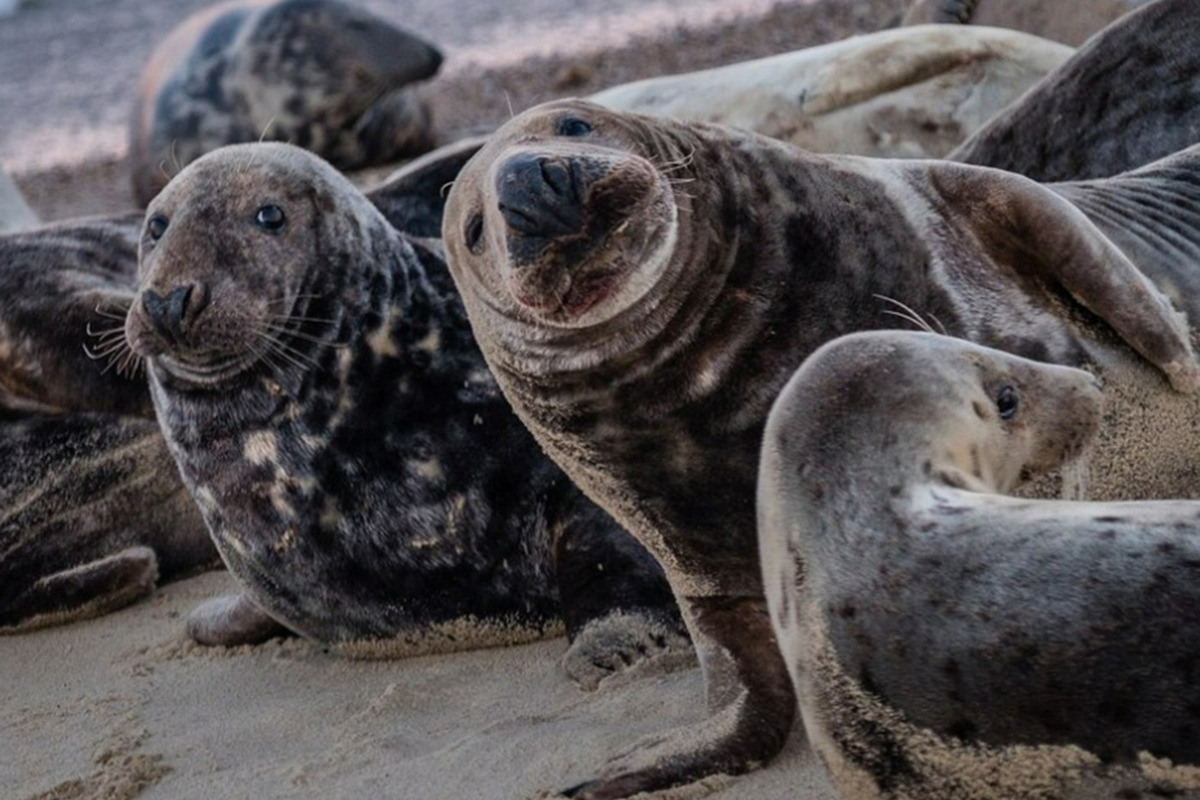The cause of the mass death of seals has been named: the infection threatens the fragile Antarctic ecosystem
[ad_1]

The mass death of seals in the South Atlantic received an explanation: bird flu was to blame. Scientists are warning that further spread of the deadly disease could threaten fragile ecosystems as tests show seals have been killed by H5N1 on South Georgia Island.
A British team of virologists has confirmed the first cases of avian flu in elephants and fur seals in the sub-Antarctic region, as the highly contagious H5N1 virus continues to spread around the world, The Guardian writes.
Researchers had previously reported mass seal deaths and that a number of elephant seals on South Georgia Island, a British overseas territory in the South Atlantic Ocean, were showing symptoms of bird flu. But while the seabird cases were confirmed, the seal infections were classified as suspicious, pending laboratory results.
The first known cases of H5N1 were discovered in the Antarctic region in October among a brown skua on Bird Island, near south Georgia. Two months later, hundreds of elephant seals were found dead. There have also been increased deaths of fur seals, kelp gulls and brown skua in several other locations.
Marco Falchieri, a scientist with the Animal and Plant Health Agency’s (APHA) Avian Influenza and Virology Group, which collected samples in south Georgia that tested positive for avian influenza. He said he saw about 20 dead elephant seals. “Emotionally it’s almost heartbreaking to see so many dead seals.”
Other seals showed respiratory signs of bird flu, he said, citing “coughing, sneezing, discharge from the eyes, nose, slow head shaking and tremors.”
Falchieri says the death toll in southern Georgia was likely about 100, mostly elephant seals, which appeared to have suffered more than fur seals.
“My biggest concern is adaptive mutation in mammals that we are not seeing in these new samples, but we need to continue monitoring,” the scientist said. The adaptive mutation, he added, “could mean that this becomes a mammal-adapted virus and therefore increases the risk in humans as well.”
The spread to south Georgia mammals is “a reflection of what’s happening around the world,” says Ashley Banyard, APHA virologist. The team of scientists diagnosed samples brought from the island in mid-December.
According to the virologist, side effects occur “when too many birds are sick with avian influenza and mammals come into close contact with the droppings of sick birds or when mammals eat the carcass of an infected bird.”
In December, a polar bear was confirmed dead from bird flu in Alaska, and an estimated 20,000 sea lions have died from the virus in Chile and Peru, The Guardian reports.
While the deaths of subantarctic seals and birds are concerning, Banyard says the good news is that the virus has not yet spread to other species. “Two years ago we were worried that penguins might contract and die from the disease in the region, but that didn’t happen, so it’s almost a positive result.”
However, according to the virologist, if bird flu continues to spread throughout the sub-Antarctic region, it “could significantly threaten fragile ecosystems and potentially put a number of very large populations of seabirds and mammals at risk.”
Norman Ratcliffe, a seabird ecologist with the British Antarctic Survey, says that about 98% of the world’s fur seal population was found in south Georgia, and that the region was home to “globally important populations of elephants and fur seals, and these populations are now under threat.” threat of significant reduction.”
Ratcliffe argues that there is no way to know the total number of seals killed, either from deaths at sea or from carcasses being fished out, “but we do know that the death toll is much higher than what we see.” “and the mortality rate is much higher than normal for this time of year.”
[ad_2]
Source link








